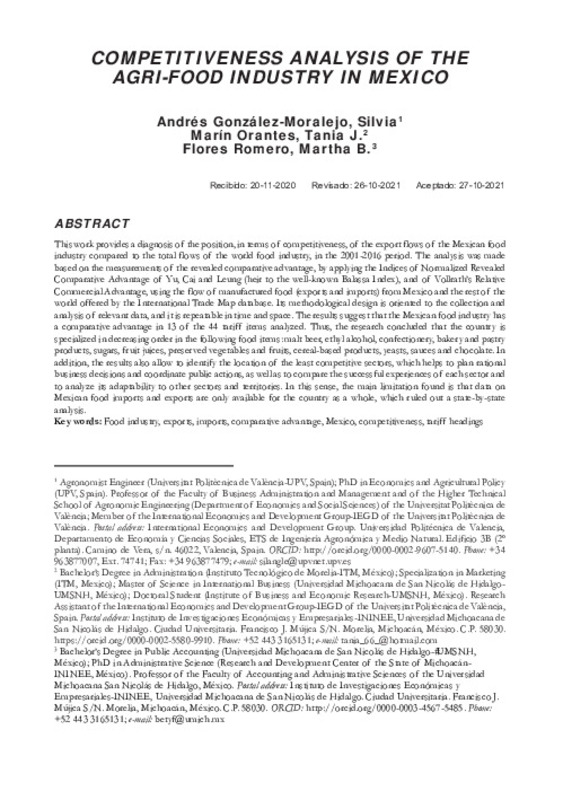JavaScript is disabled for your browser. Some features of this site may not work without it.
Buscar en RiuNet
Listar
Mi cuenta
Estadísticas
Ayuda RiuNet
Admin. UPV
COMPETITIVENESS ANALYSIS OF THE AGRI-FOOD INDUSTRY IN MEXICO
Mostrar el registro completo del ítem
Andrés González-Moralejo, S.; Marín Orantes, T.; Flores Romero, M. (2021). COMPETITIVENESS ANALYSIS OF THE AGRI-FOOD INDUSTRY IN MEXICO. Agroalimentaria. 27(52):125-140. http://hdl.handle.net/10251/184033
Por favor, use este identificador para citar o enlazar este ítem: http://hdl.handle.net/10251/184033
Ficheros en el ítem
Metadatos del ítem
| Título: | COMPETITIVENESS ANALYSIS OF THE AGRI-FOOD INDUSTRY IN MEXICO | |
| Autor: | Marín Orantes, Tania Flores Romero, Martha | |
| Entidad UPV: |
|
|
| Fecha difusión: |
|
|
| Resumen: |
[EN] This work provides a diagnosis of the position, in terms of competitiveness, of the export flows of the Mexican food
industry compared to the total flows of the world food industry, in the 2001-2016 period. The analysis ...[+]
|
|
| Palabras clave: |
|
|
| Derechos de uso: | Reserva de todos los derechos | |
| Fuente: |
|
|
| Editorial: |
|
|
| Versión del editor: | http://erevistas.saber.ula.ve/index.php/agroalimentaria | |
| Tipo: |
|







